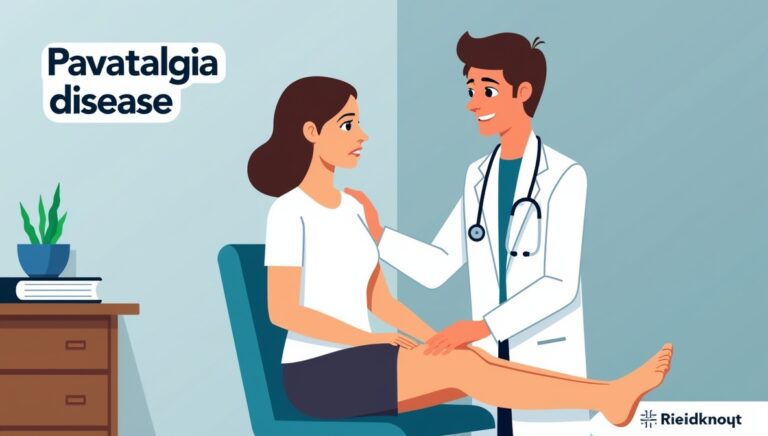Pavatalgia disease has become an increasingly discussed medical condition due to its complex symptoms and impact on daily life. As a lesser-known disorder, it often leads to confusion among patients seeking accurate, science-backed information. In this comprehensive guide, we provide an in-depth examination of Pavatalgia disease, its underlying causes, clinical manifestations, diagnostic processes, and treatment options. Our aim is to equip readers with a complete, medically informed resource that stands out in clarity and depth.
What Is Pavatalgia Disease?
Pavatalgia disease refers to a chronic pain condition primarily affecting the pelvic region, lower abdomen, or surrounding muscles and connective tissues. Although often mistaken for common gynecological or gastrointestinal disorders, Pavatalgia is characterized by persistent or intermittent pain without a clear, singular organic cause.
This condition may involve:
- Neuropathic pain
- Musculoskeletal dysfunction
- Inflammatory responses
- Hormonal imbalances
- Psychological stress factors
The complexity of the disorder means it frequently requires a multidisciplinary approach to management.
Causes of Pavatalgia Disease
The exact cause of Pavatalgia disease is not universally defined, but researchers associate the condition with several potential triggers. These include:
1. Musculoskeletal Dysfunction
Structural imbalances in the pelvic floor muscles, hips, or lower spine often contribute significantly to pain. Muscle spasms, joint misalignment, and ligament strain can all create chronic tension and discomfort.
2. Nerve Sensitization
Pavatalgia frequently involves nerve irritation or hypersensitivity, especially affecting the pudendal, sciatic, or pelvic nerves. This sensitization can develop from:
- Prior trauma
- Surgery
- Chronic inflammation
- Repetitive strain
3. Hormonal Fluctuations
Hormonal shifts—especially in women during menstruation, pregnancy, or menopause—may exacerbate inflammation and increase susceptibility to pelvic pain.
4. Inflammatory Disorders
Conditions such as endometriosis, pelvic inflammatory disease (PID), or irritable bowel syndrome (IBS) may overlap with Pavatalgia or trigger its onset.
5. Psychological Stress
Chronic stress and anxiety can amplify pain signals and worsen symptoms. Emotional factors do not cause Pavatalgia but can significantly influence the severity of symptoms.
Common Symptoms of Pavatalgia Disease
Although symptoms vary by individual, the most recognized signs include:
1. Chronic Pelvic Pain
The hallmark symptom is deep, aching, or sharp pelvic pain that may radiate to:
- Lower back
- Hips
- Thighs
- Abdominal region
Pain may intensify during physical activity, prolonged sitting, or sexual intercourse.
2. Pain During Urination or Bowel Movements
Some individuals report burning sensations, pressure, or discomfort associated with urinary or digestive function.
3. Muscle Tightness or Spasms
Pelvic floor muscle tightening is common, often triggered by stress, mobility issues, or inflammation.
4. Sexual Dysfunction
Pavatalgia may lead to:
- Painful intercourse
- Decreased libido
- Erectile or vaginal discomfort
5. Mobility Limitations
Chronic pain may hinder walking, sitting, or standing for extended periods.
Who Is at Risk?
Pavatalgia disease can affect anyone, but certain groups exhibit higher risk:
- Women aged 20–50
- Individuals with prior pelvic surgery
- Patients with chronic musculoskeletal conditions
- Athletes with repetitive strain injuries
- Individuals with chronic inflammatory or gastrointestinal diseases
A history of trauma or high stress levels may further increase susceptibility
How Pavatalgia Disease Is Diagnosed
Diagnosing Pavatalgia is challenging due to its overlapping symptoms with other pelvic disorders. A complete diagnostic pathway typically includes:
1. Detailed Medical History
Clinicians assess:
- Pain patterns
- Surgical history
- Sexual health
- Pre-existing conditions
- Lifestyle factors
2. Physical Examination
A pelvic exam evaluates:
- Muscle tension
- Trigger points
- Joint alignment
- Neurological responses
3. Imaging Tests
While not always necessary, imaging may help rule out other illnesses:
- MRI
- Pelvic ultrasound
- X-rays of hips or spine
4. Diagnostic Nerve Blocks
Local anesthetic injections can help determine whether neuropathic involvement contributes to pain.
5. Laboratory Tests
Blood and urine tests help rule out infections or inflammatory diseases.
Effective Treatment Options for Pavatalgia Disease
Treatment requires a comprehensive, multidisciplinary strategy. The most effective approaches include:
1. Medication
Depending on severity, clinicians may prescribe:
- Anti-inflammatory drugs
- Muscle relaxants
- Neuropathic pain medications
- Hormonal therapy (for menstrual pain triggers)
2. Pelvic Floor Physical Therapy
One of the most successful treatments, this therapy includes:
- Manual muscle release
- Trigger-point therapy
- Stretching and strengthening
- Biofeedback
3. Nerve-Targeted Treatments
For nerve-based pain, options include:
- Nerve blocks
- Neuromodulation therapy
- Radiofrequency ablation
4. Lifestyle and Dietary Adjustments
To reduce inflammation and pain:
- Anti-inflammatory diets
- Stress reduction techniques
- Regular low-impact exercise
- Improved posture and ergonomics
5. Cognitive Behavioral Therapy (CBT)
CBT can help patients manage the emotional component of chronic pain and reduce pain perception.
6. Surgical Interventions
Surgery is considered a last resort for cases with identifiable structural abnormalities, such as endometriosis or nerve entrapment.
Preventing Pavatalgia Disease
Although not always preventable, individuals can reduce personal risk by:
- Maintaining pelvic and core muscle strength
- Practicing good posture
- Managing stress effectively
- Seeking early treatment for pelvic infections or injuries
- Avoiding repetitive strain activities
Living With Pavatalgia Disease
Patients diagnosed with Pavatalgia disease often face physical and emotional challenges. However, with early intervention, personalized treatment, and ongoing support, most individuals achieve significant symptom relief and improved quality of life.
A holistic approach that includes medical care, physical therapy, mental health support, and lifestyle changes offers the best long-term outcomes.
Conclusion
Pavatalgia disease is a complex and multifaceted condition that demands comprehensive understanding, accurate diagnosis, and integrated care. Through a combination of medical treatment, physical therapy, and lifestyle strategies, patients can regain control and significantly reduce discomfort. Increased awareness and continued research will help improve outcomes and offer hope to those affected by this challenging condition.


